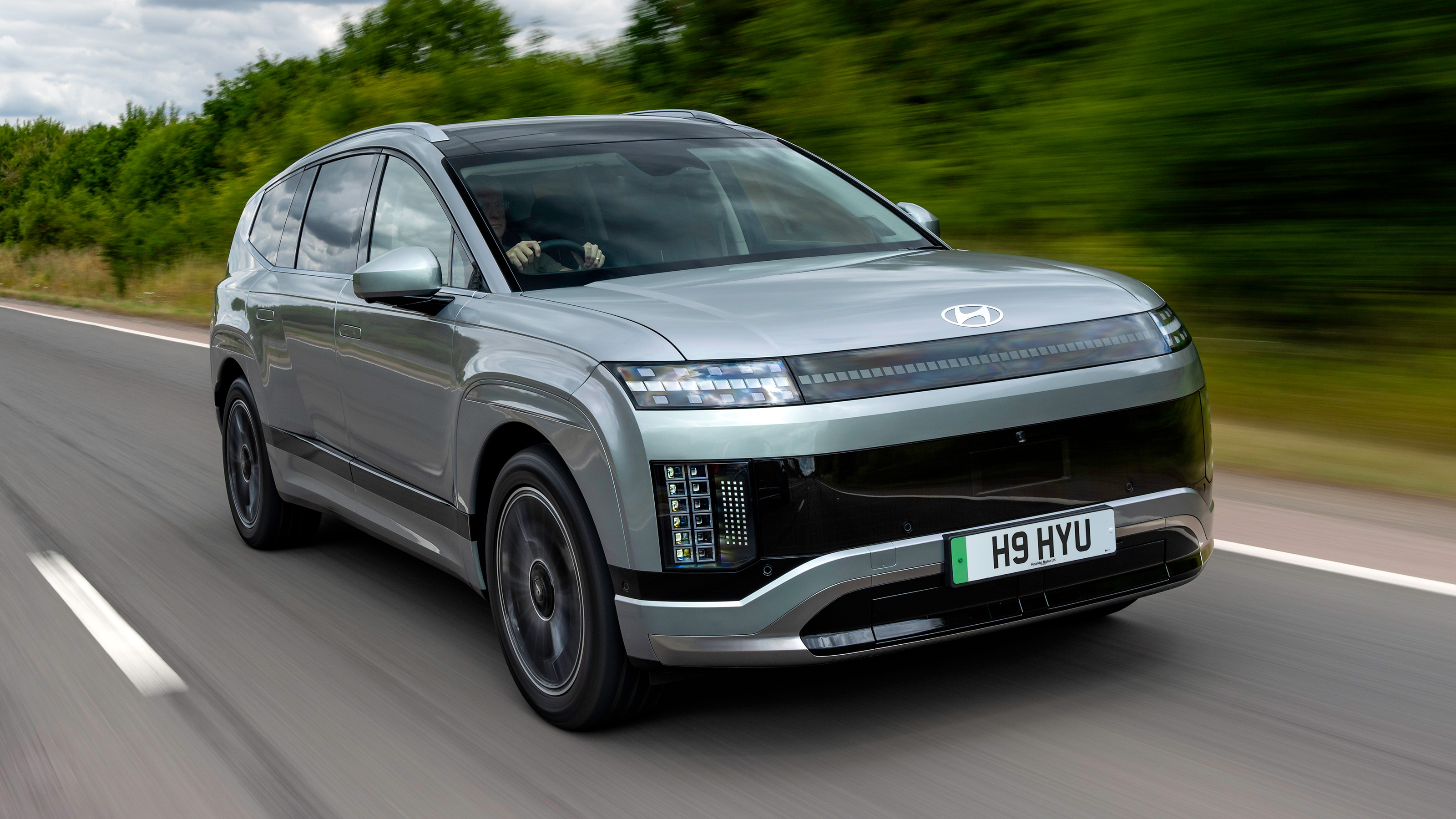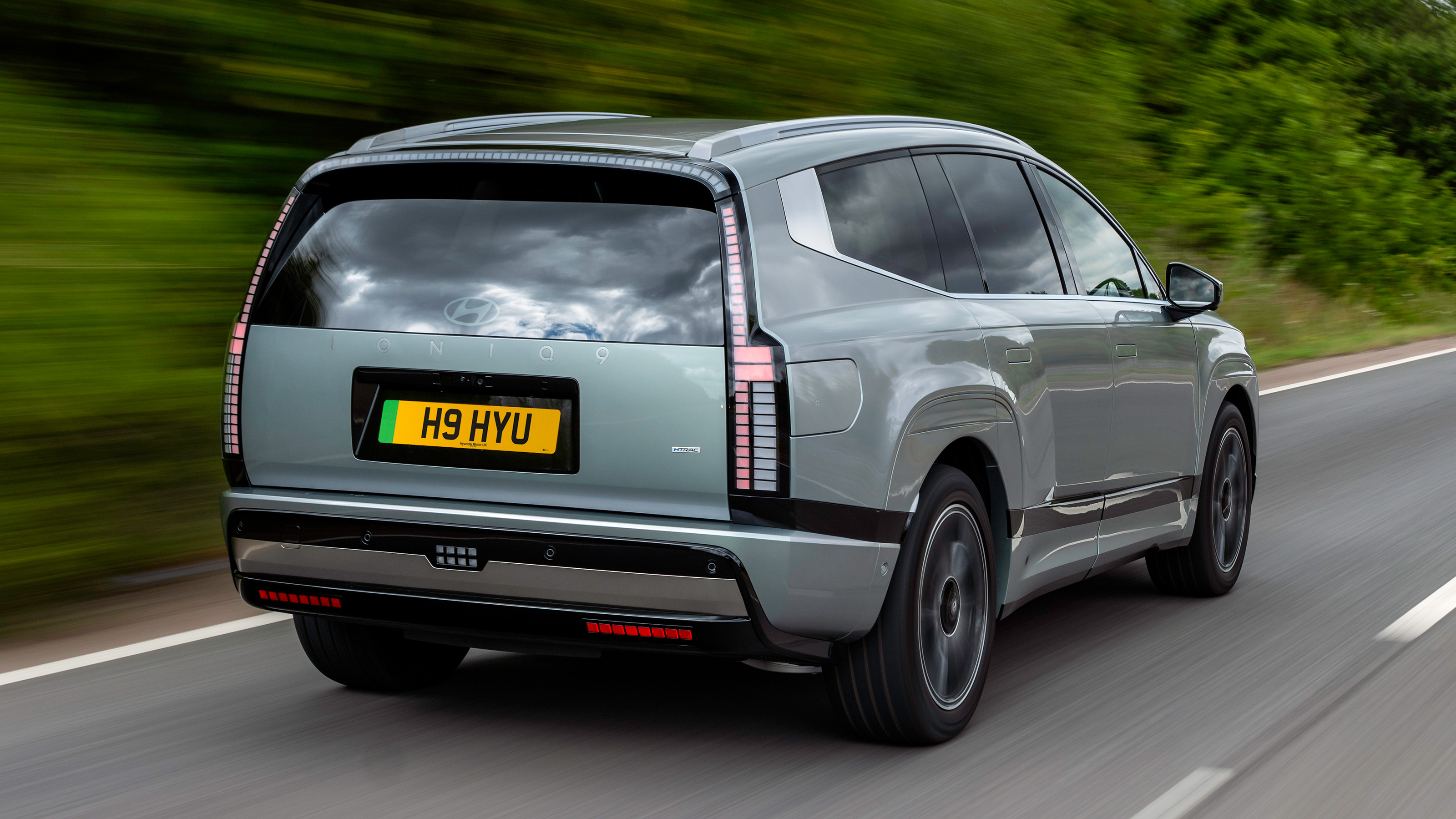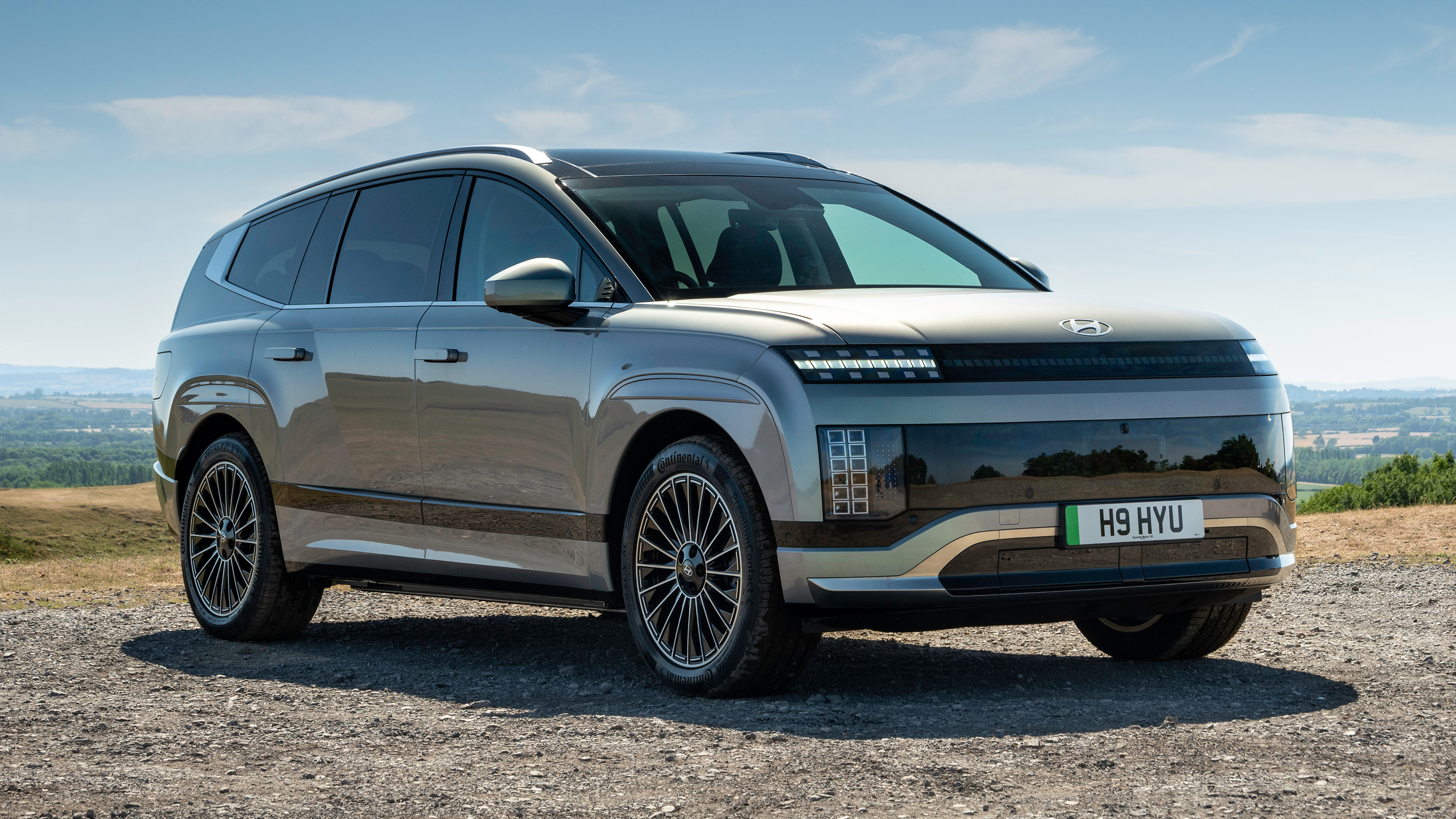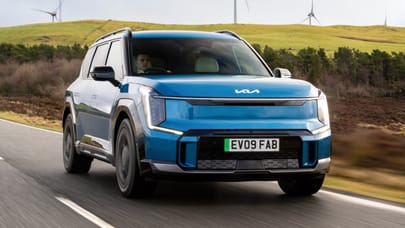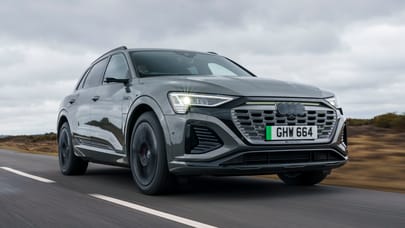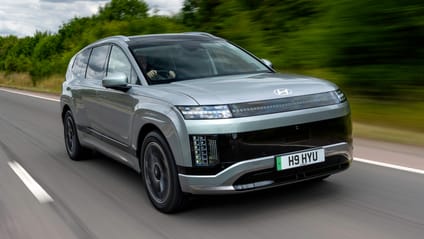
Good stuff
Very comfortable, huge battery equals decent range, practicality, looks cool
Bad stuff
Top trim interior a bit gauche, vague steering, some wind noise intrusion, wider than most towns
Overview
What is it?
This is the Hyundai Ioniq 9, the third entrant in the Korean giant’s EV line-up, and the one that aims to take the brand upmarket into a zone neither it nor we ever thought possible before now.
It’s powered by a 110.3kWh battery that delivers a maximum claimed range of 385 miles WLTP, has a fully flat floor, and a choice of six or seven seats. Inside you’ll find what Hyundai calls a Universal Island, which is basically a huge storage box that slides between the first two rows of seats. And there’s an enormous amount of boot space with the third row folded out of the way. There are flats in London with less space inside than this thing.
The Ioniq 9 has an 800V battery system, and Hyundai claims it can recharge from 10 to 80 per cent in just 24 minutes assuming you can find a 350kW charger. It’ll also operate on 400 volts for less rapid chargers. Vehicle-to-load (V2L) capability means it doubles as a giant mobile power bank.
How does the model line-up stack up?
The entry-level car is the Long Range RWD with a 215bhp motor on the rear axle and 258lb ft, and in the middle there’s a Long Range AWD version that adds a 92bhp front motor for 303bhp and 446lb ft. It’s no rocketship, but then it’s not meant to be. And your passengers will thank you for a more mindful approach.
The most potent Ioniq 9 is the dual motor Performance AWD, which has a 215bhp motor on the front and rear axle (for a total of 421bhp) and delivers 516lb ft of torque. 0-62mph in under five seconds, before you ask.
Premium, Ultimate and Calligraphy – those are your three trim levels.
How much is it and what’s it up against?
Things kick off at £65k for the base model and climb up to £75.5k for the fast one in the most rarefied spec. Only there can you opt for the six-seater, at the cost of another three grand. Gulp.
So it’s got a bigger battery than the related Kia EV9 and costs virtually identical money. That’s a big win for Hyundai. Volvo’s EX90 is the other obvious rival and you won’t get near one of those for less than £82k.
You could think about the Audi Q8 e-tron or BMW iX but they clearly lack the Ioniq 9’s multi-seat versatility. We’re still waiting for the electric Range Rover, but the ICE version is £120k plus in long wheelbase form. Or there’s the Mercedes EQE SUV. Hyundai appears to have played a blinder here.
A highly luxurious Hyundai *and* value for money? I like it! It also looks pretty cool for a big bus.
Doesn’t it? Between them, Kia and Hyundai have wrested design leadership away from the big names, and the Ioniq 9 riffs off some of the ideas already rolled out on the Ioniq 5 and Ioniq 6. Hyundai calls its design philosophy ‘aerosthetic’, and it aims to be aero-efficient and future-adjacent without being polarising.
Hyundai’s director of design, Simon Loasby, compares the Ioniq EVs to chess pieces: they’re related but have their own distinct personality. The Ioniq 9 is less obviously ‘designery’ than the EV9 but it makes sense to offer something different. The Kia’s renegade Transformers look might be too much for some. Besides, there’s still plenty of clever thinking here.
Such as?
Well, there are those parametric ‘pixel’ lights, which invoke a fashionable Eighties vaporwave/video game past that Hyundai doesn’t really have. The Korean alphabet is a more pertinent influence. More importantly, they’re designed to enhance night-time visibility while preventing glare. The Ioniq 9 looks smooth and daring, less Minecrafty than the plus-size Kia, but its shape also helps optimise aero.
Ostensibly a big barn on wheels, the Ioniq 9’s curved roofline and tapered tail actually help deliver a drag coefficient of 0.259 when it’s fitted with slim-line digital side mirrors. That sort of figure would have fried minds back when Pac-Man was a newbie. Why does it matter? Because less drag means improved range. We’re not sure about those wheelarch ‘eyebrows’, though.
Tell me more about the aero stuff. I’m intrigued.
Hyundai has actually gone a bit Ferrari on the aero front, strange as that might sound. The Ioniq 9 features a new dual-motion active aero flap on its under-body. That allows cooling air for the battery and drive system to flow through when it’s needed; otherwise they remain closed in order to reduce air resistance. The mechanism even combines a straight movement with a rotation to minimise disruption to the air flow.
The Ioniq 9 also has a 3D-shaped underbody cover, aero-optimised alloy wheels, and you’ll look in vain for an antenna on the roof. The windscreen, tailgate glass and instrument panel cover off all the car’s connectivity needs. Compare that to the Volvo EX90’s Lidar carbuncle.
Clever stuff. So what’s it like to drive?
Smooth and seamless, the sort of car you get out of after 250 miles and feel better than when you climbed in. The seats are amazing, for one thing. With multi-link suspension at either end and twin-valve dampers, the Ioniq 9 is self-evidently set up for comfort over short or long distances, and its major calling card is rolling refinement. Thank the active noise cancelling tech, double glazing and those foam-filled tyres for that.
Dare I ask what it’s like if you find a twisty road?
Well, you certainly wouldn’t go looking for one, let’s put it that way. But its body control is impressive – the Ioniq 9 is composed and capable, and only rolls if you’re driving like a total berk with over-ambitious entry speeds. Which you won’t, because absolute precision in something this wide and heavy is impossible. High-hedged back roads need extra caution.
The steering’s pleasantly weighted, if a touch too heavy for easy cruising. Regen braking gives you the option of single-pedal driving if you want it.
Mostly, it’s about maintaining a serene sort of pace. Which does wonders for efficiency. We managed 2.5 mi/kWh over hundreds of warm UK motorway miles, and we’d expect even more on slower roads. So most of the time you’ll get more than 300 miles from it. And you can trust the range prediction: it was spot on for us.
Our choice from the range

What's the verdict?
Fitness for purpose is the primary yardstick by which every car should be measured. On which basis, Hyundai’s Ioniq 9 is both accomplished and clever. Its people-carrying, quasi-minibus remit means its design is less out there than the Ioniqs 5 and 6, but the result is still cool.
More importantly, it’s another Hyundai whose design flair is backed up by some genuinely useful thinking. The flat floor interior gives it a unique ambience, it’s very comfortable, and it goes surprisingly well, despite its size. Wherever you’re seated, the experience is hushed and luxurious.
It joins the Kia EV9 and Volvo EX90 in a rarefied sector, as an all-electric, multi-seat family vehicle that somehow manages to be practical and genuinely desirable. Only the Volvo beats it as a package: it’s more user friendly and better value than the Kia, or indeed anything Germany has come up with so far.
Just make sure you’ve got the space to park it. And a cheap tariff for that mahoosive battery.
The Rivals
Trending this week
- Car Review
Hyundai Kona
- Long Term Review
Time's up with the Mini Countryman: here's the six-month verdict
- Top Gear's Top 9
Nine dreadful bits of 'homeware' made by carmakers




